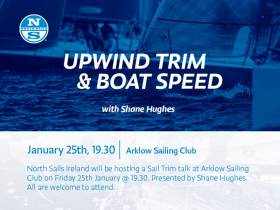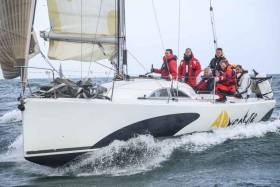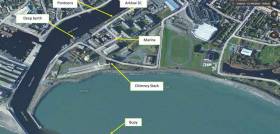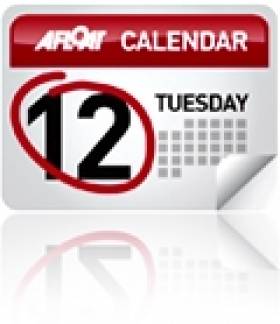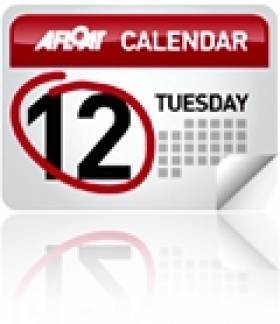Displaying items by tag: Arklow Sailing Club
North Sails Ireland Takes Sail Trim Talk To Arklow This Friday
North Sails Ireland will be hosting its successful Sail Trim presentation at Arklow Sailing Club from 7.30pm this coming Friday 25 January.
Following on from last week’s trim talk in Greystones, North Sails Ireland expert Shane Hughes will take Arklow Sailing Club members and visitors through the latest theory and techniques for improving and refining upwind trim and boat speed.
The presentation draws on the North U syllabus used around the world by North Sails representatives, and includes the use of North Sails' proprietary Sail Trim Simulator to help illustrate some of these trim solutions.
All are welcome to this Friday evening’s talk in Arklow, which will show how the angle of attack, depth, and twist combine to control upwind speed, pointing and balance; and how to change the trim (mainsail and jib) to improve performances as conditions change between light, moderate and heavy air.
Big ISORA Fleet Has 8am Start for First Race To Arklow
Saturday's fourth ISORA race of the season starts from Dun Laoghaire, County Dublin and finishes in Arklow, County Wicklow. The 60–mile race will be the first ISORA visit to Arklow for many years and Arklow Sailing Club, as previously reported by Afloat.ie, is preparing a warm welcome for the offshore fleet with over 32–boats expected for the 8am start off Dun Laoghaire Harbour.
The 'Sailing Instructions and Supplementary Information for Race 4' are attached below.
The ISORA fleet has grown to 50 boats for the 2017 season with fixtures on both sides of the Irish Sea.
After next weekend's Holyhead– Dun Laoghaire Race, there is another buoyant turnout in prospect for ISORA (34 boats are already entered) for a new offshore race at the end of May. This particular offshore race on May 27th is unique as it will start and finish on the 'Irish side' – starting in Dun Laoghaire and finishing in a new port for ISORA, Arklow, in County Wicklow.
ISORA chief Peter Ryan says, 'We are looking forward to a great reception from Arklow Sailing Club'.
17 Enter Arklow's Metmasts Turbines Yacht Race
There are 17 entrants so far for Sunday's Metmasts Turbines Yacht Race. The second race round the Arklow wind turbines is hosted by Arklow Sailing Club. The challenge of a 34 mile sprint around the Arklow Bank Wind Turbines, coupled with the attraction of the magnificent metmAsts trophies and prize fund has enticed a strong fleet. All competing yachts will be fitted with GPS trackers, so that live progress can be viewed by followingat: www.arklowsc.com. Entry forms and details are available on the same site.
Metmasts Competing Yachts
AQUELINA Arklow SC IRC WINNER 2009
LLUEST Courtown SC
MAURITIUS Courtown SC
C U L8 R Courtown SC
ELENTIC Courtown SC
NOONAN BOATS Wicklow SC
HI-FLYER Wicklow SC
X-POSURE Arklow SC
DREAMTIME Arklow SC
OUTHAUL Arklow SC
JAERONIMO Arklow SC
MOLLY Arklow SC
NIAMH CINN OIR Arklow SC
CETEWAYO Arklow SC
BLEW BUBBLES Arklow SC
MISI Arklow SC
SIDEWNDER Arklow SC
GPS Tracking for Metmasts Turbine Race
Arklow's MetMasts Turbines Yacht Race around the Arklow Bank wind turbines takes place this Sunday, and will be tracked live onine via GPS transponders.
Each boat will be fitted with a GPS unit, with spectators and friends able to track their favourite team's progress on the Arklow SC website.
The race start is at 1000Hrs, with a skippers' briefing at 0900 Hrs in the clubhouse.
The challenge of a 34 mile sprint around the turbines, coupled with the attraction of the magnificent metmAsts trophies and increased prize fund, should entice keen sailors looking for the extra excitement that this new race promises.
Entry forms and details are available at www.arklowsc.com
Arklow Sailing Club
This year (2009) Arklow Sailing Club celebrates their 40th anniversary with increased vigour and energy. Originally founded by a handful of local enthusiasts in 1969, the club operates from a base on the North Quay in Arklow town, on the east coast.
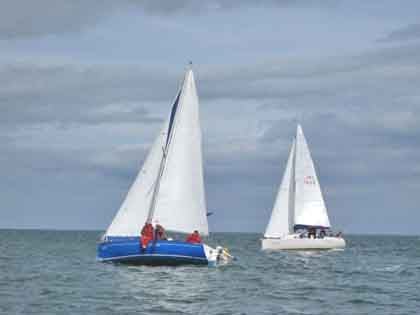 Left: some of the entrants in the Arklow SC Kilmichael Challenge 2009
Left: some of the entrants in the Arklow SC Kilmichael Challenge 2009
Membership is currently over 130 registered members, but there are many more that go sailing on a regular basis; taking advantage of crewing positions on members’ boats.
Although there are a number of power boat and dinghy owners in the club, the majority of boats are yachts. In fact there are over 50 yachts within the club, involved in either cruising or racing, although some members are interested in both activities.
Club activities range from cruising in company, cruiser races on Wednesday evenings and Saturday afternoons, Squib racing, training and a number of Annual Regattas.
Recently the Club have undertaken work to a defined development plan for the next ten years. Developed in conjunction with the ISA, Arklow Sailing Club aims to encourage increased activity with current members, but more crucially, they identified a need to attract and retain potential new members.
As early as 2005, the Club were looking towards the future and under the leadership of Brian Dempsey (Commodore 2005–2007) the development of an attractive training programme was identified as the way forward. The decision was taken to focus on adult training using small keelboats instead of dinghies. Not only would this enable the instructor to be in the boat with two beginners but additionally it would be more suitable to operate in the prevailing conditions.
Arklow Sailing Club is now the proud owner of a fleet of Squib keelboats. This fleet was funded through local sponsorship. Local businesses Arklow Shipping, Bridgewater Shopping Centre, Qualceram and George Kearon Ltd each provided a Squib and safety equipment to the Club.
With the successful introduction of the Squibs, individuals are now beginning to invest in individually owned Squibs thereby helping to build the fleet further.
Not all of those who try sailing catch the bug. However for those who do, this new club fleet is additionally available to the newcomers outside their training programme. This increases their opportunity to join in club cruises and racing using boats they are familiar with.
That this training programme is successful is obvious. 2008 has seen a 22% increase in new members, the majority of which were introduced to sailing and the Club structure through this new fleet of boats.
In 2008, under the Commodoreship of Paul Barrett, Arklow Sailing Club was certified as an ISA Training Centre and they continue to expand the range of ISA Training on offer.
One area that is popular is powerboat training. This again provides a
means for the Club to attract new members, particularly as they
recognise that not all boat users wish to rely solely on sail power.
Arklow Sailing Club also successfully applied for a grant under the
Department of Arts, Sport & Tourism Sports Capital Programme. This
allowed the Club purchase a brand new RIB from Lencraft, which is now
used as their Safety Boat.
2008 also saw the Club host the South East Coast Regatta, which attached visiting boats from clubs to the north and south of Arklow. This two day event rotates annually between the east coast clubs and Arklow worked hard to create a holiday atmosphere for the duration.
For 2009 the Club hosted a 40th Anniversary Regatta in June to celebrate their ongoing growth and success.
Arklow Sailing Club, c/o Paul Barrett, North Quay, Arklow, Co Wicklow, tel: 087 250 9330
Have we got your club details? Click here to get involved


























